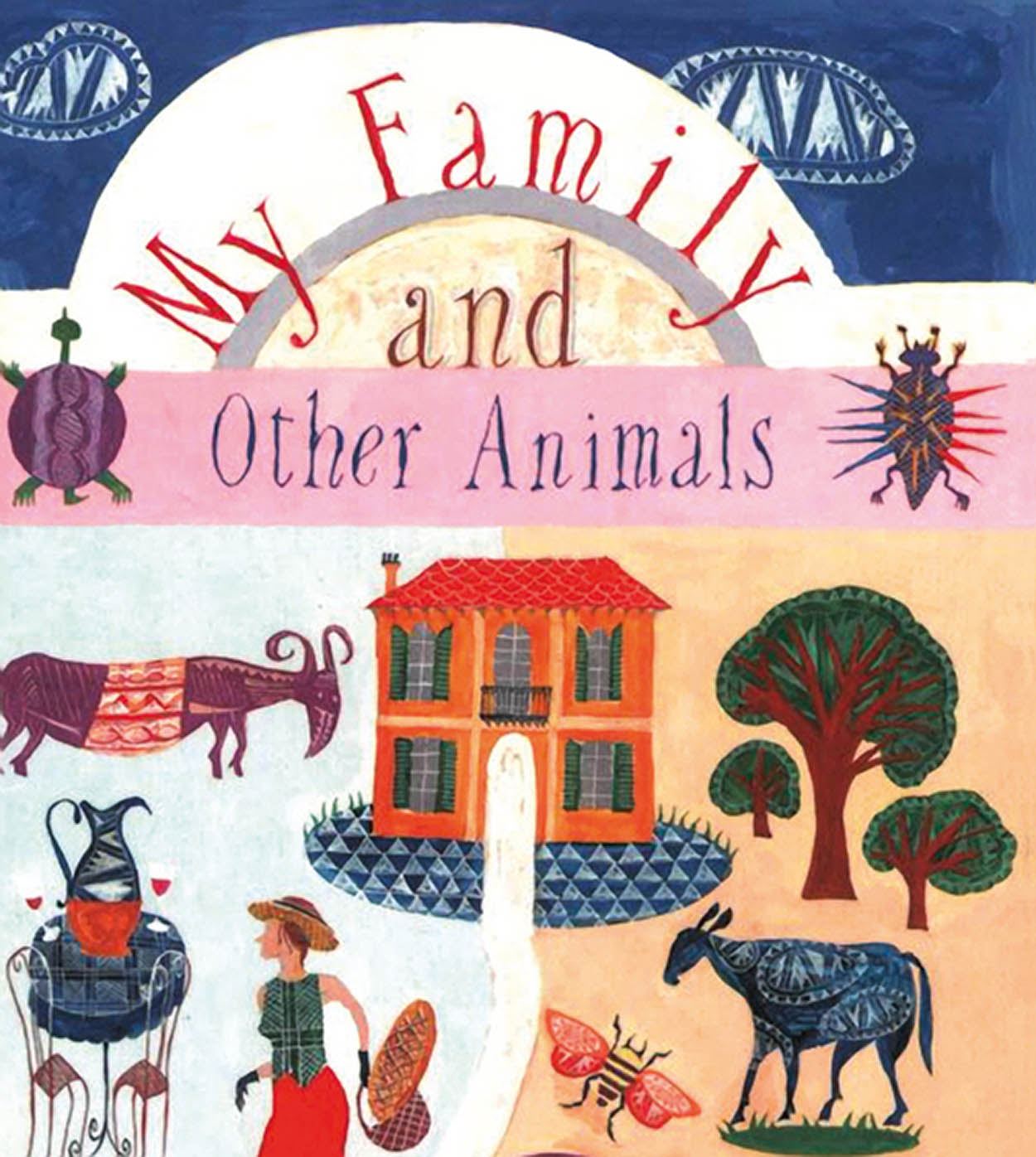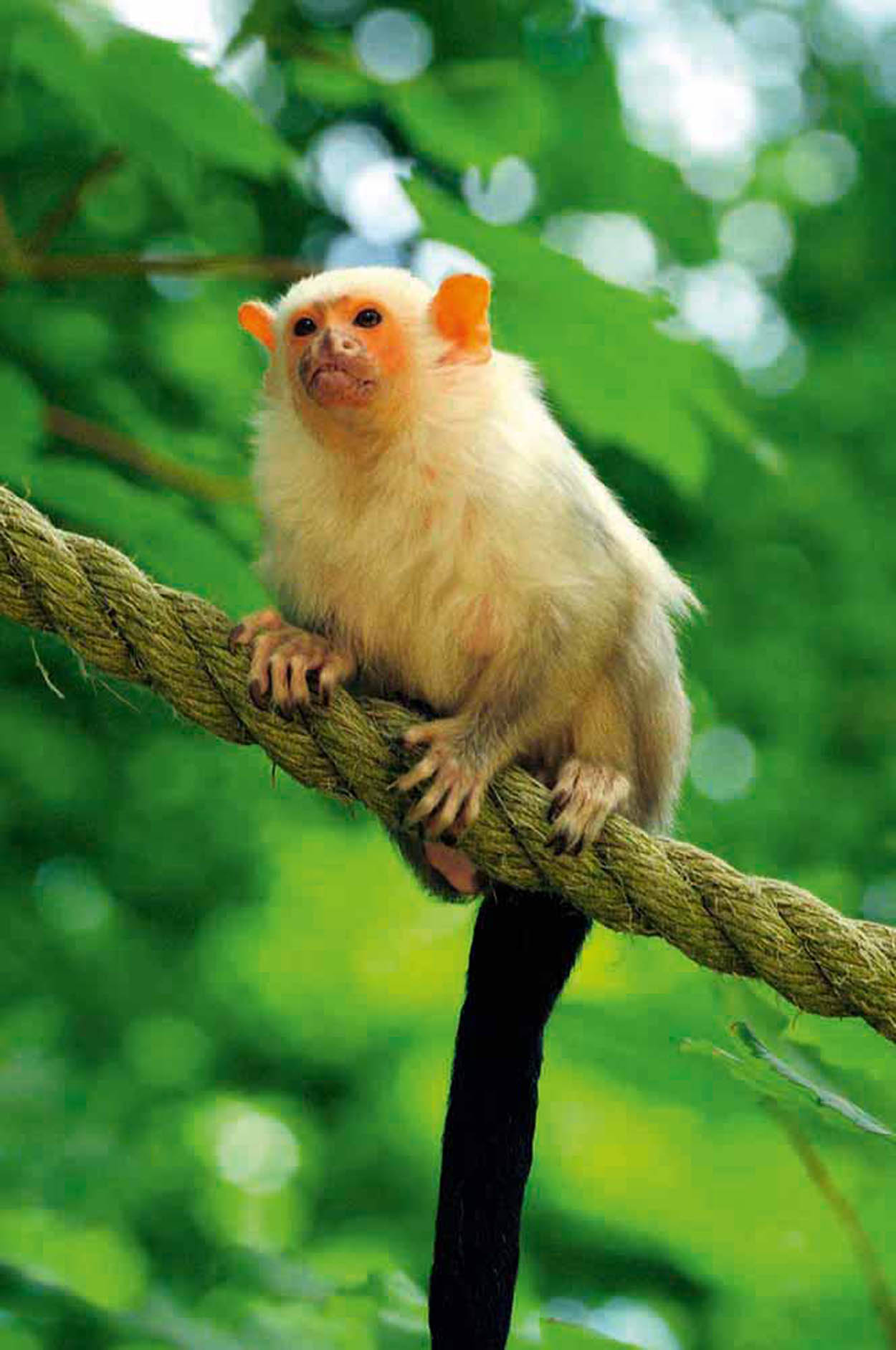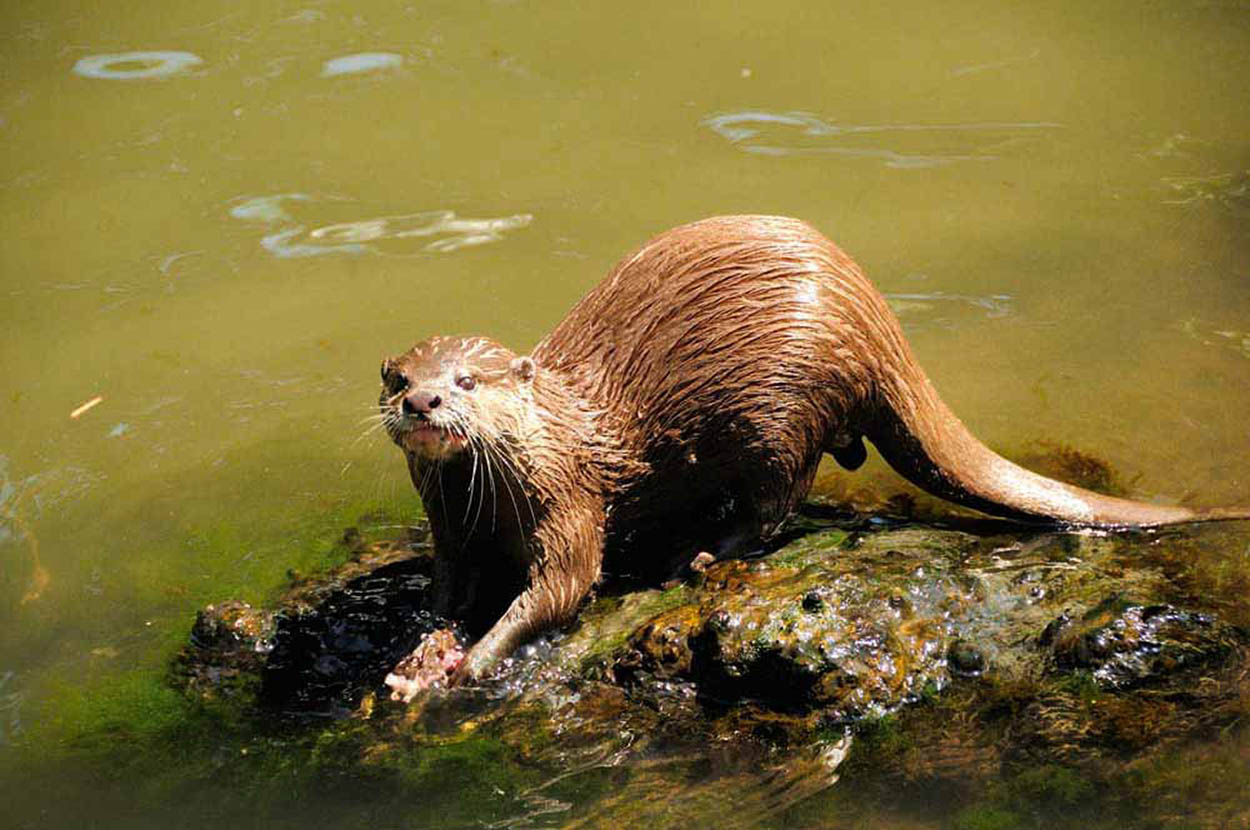
Flamingos add a splash of colour to the grounds of Les Augrès Manor.
Mockford & Bonetti/Apa Publications
Tour 7: Durrell’s Wildlife
“You can’t build a tortoise. You can’t build a bird. That’s what we’ve got to remember – if we destroy it, we can’t recreate it.” Gerald Durrell (1925–95).

Flamingos add a splash of colour to the grounds of Les Augrès Manor.
Mockford & Bonetti/Apa Publications
From the age of six, when he lived in central India, Gerald Durrell kept a collection of animals and dreamt of having his own zoo. His first collection included “everything from minnows to woodlice”; then, when his family moved to Corfu during the 1930s, his menagerie extended to “everything from eagle owls to scorpions”. His animal adventures on the Greek island – along with the antics of his family – are humorously described in his best-selling book My Family and Other Animals (1956). The hit TV series The Durrells (2016-18) was based on Durrell’s three autobiographical books about his years living on Corfu.
At 21 Durrell inherited £3,000 and used it to fund an animal-collecting expedition to the British Cameroons. In 1957, after several other major expeditions to far-flung parts of the world to collect animals on behalf of zoos, the pioneering naturalist and author founded what was then known as the Jersey Wildlife Preservation Trust. The name was later changed to the Durrell Wildlife Conservation Trust, then to the Durrell Wildlife Park – or simply Durrell – and now it is called Jersey Zoo. For many years this has been the island’s prime visitor attraction. This is no ordinary zoo with the usual elephants and giraffes. It is entirely devoted to the preservation of animal life and has become internationally renowned as a sanctuary and breeding centre for some of the world’s most endangered species.

This way for flamingos and gorillas, that way for bats and lemurs.
Mockford & Bonetti/Apa Publications

Les Augrès Manor, once Durrell’s home, is now the headquarters of the Durrell Wildlife Conservation Trust.
Mockford & Bonetti/Apa Publications
Durrell’s Legacy
For over sixty years the Trust has been working on saving species from extinction, building up colonies and reintroducing them to their original homes. As the symbol of the Trust Durrell chose the dodo, demonstrating his commitment to saving rare species from the fate of the flightless bird from Mauritius.
Durrell Souvenirs
The Durrell shop has an excellent range of animal-related products, such as Gerald Durrell’s books (he wrote no less than 37) including My Family and Other Animals (his amusing animal adventures on Corfu), zoo videos, limited edition ceramics, gorilla posters, soft toy orang-utans, Livingstone fruit bats and lemurs, jigsaws and souvenirs with the Durrell (dodo) symbol.

Feeding time is a popular time, not just for the animals, but the visitors too.
Mockford & Bonetti/Apa Publications
In the early days Durrell’s efforts at captive breeding were dismissed by many eminent zoologists. He was one of the first to draw attention to what was happening in the environment, and fifty years on virtually every reputable zoo follows at least some of the principles that he put into practice here in Jersey.
Visitor Information
Getting There: Jersey Zoo, Les Augrès Manor, La Profonde Rue, Trinity (4 miles/6km north of St Helier), accessed on the B31; www.durrell.org. Bus routes: 3, 13 and 23.
Some amazing animal experiences and guided tours are offered, giving you the opportunity to see and learn about a species up-close – including meerkats, fruit bats and lemurs – from a keeper-only area or even within the enclosure itself. These special experiences must be pre-booked well in advance – group sizes are small, usually a maximum of just four visitors, so you need to apply for a place on these 4–6 weeks ahead of your visit.
The perfect setting
Since the zoo opened in 1959 over 13,000 animals have been born here, and several species have been saved from extinction and reintroduced into their original habitats. Gerald Durrell died in 1995, and at his memorial service David Attenborough spoke of the zoo’s priorities: “the animals first, the staff second and the public as privileged paying guests”. Durrell’s zoologist wife, Lee, is executor of the Durrell estate and continues the work of the Trust.

Durrell’s famous memoirs.
Penguin Books

White-handed gibbons move around by swinging their body along using alternate handholds.
Mockford & Bonetti/Apa Publications
The setting is a 32-acre (13 hectare) oasis of woodland, landscaped lawns and water gardens, surrounding an eighteenth-century granite manor house. There are over 130 species of animals, birds and reptiles, and the Durrell International Training Centre which has seen over three thousand students from 128 countries since it opened in 1984. The ex-students are now in charge of some of the most important conservation projects in the world.
Wherever possible, the trust has tried to cultivate the native habitat of the animals’ wildlife. Compared to most zoos, the enclosures are spacious and imaginative, and the animals do look remarkably content. The golden-headed lion tamarins roam in the woodlands, the gorillas lounge in their spacious compound, the aye-ayes have a special nocturnal unit and the rope-haired orang-utans swing happily from their ropes.
Saved from the Brink
The Trust mainly focuses on the island areas of the Galápagos, Caribbean islands, Madagascar, Indian Ocean islands and India. Among the success stories are species which, through captive breeding, have been reintroduced to Mauritius.

Loggers in the Amazon Basin are becoming a threat to the highly intelligent, silvery marmoset.
Mockford & Bonetti/Apa Publications

A Sumatran orang-utan collects his take-away lunch.
Mockford & Bonetti/Apa Publications
These include the Mauritius kestrels, the echo parakeet and the pink pigeons – distant relations of the dodo. The Trust is currently concentrating on restoring the ecosystems of the small islands of Mauritius that were once rich habitats of wildlife. Other species which have been brought back from the brink are the golden lion tamarins which have been released in a private reserve in Brazil, the thick-billed parrots, considered extinct in Arizona, which are now flying free in their native pinewoods, the St Lucia whiptail lizard, the Mallorcan midwife toad and the Assam pygmy hog, the smallest pig in the world.
In 1989 a pair of St Lucia Amazon parrots, the national bird, flew courtesy of British Airways back to the Caribbean, accompanied by the Prime Minister of St Lucia who travelled to Jersey especially to escort them home.
Among other projects are the Floreana mockingbird from the Galápagos and the Montserrat mountain chicken, a large frog that is in danger of extinction from a fungal disease. Closer to home, Durrell works with local wildlife groups to help save the declining population of Jersey’s green lizard and the symbolic Jersey crapaud or common toad.
A moated enclosure near the entrance is home to a family of ring-tailed coatis, howler monkeys and a pair of Andean bears, Quechua and Bahia. The only bears in South America, the species is being pushed to extinction by the destruction of their natural habitats and the huge demand for bear blood, bile and organs used in traditional medicine and delicacies such as bear paw soup.
Gentle Jambo
Favourite inmates of the zoo are the Sumatran orang-utans, who provide endless entertainment in their splendid habitat of islands and waterways; the Livingstone fruit bats, with a wingspan of 6ft (almost 2 metres); and – most famous of all – the western lowland gorillas.
Adopt an Animal
It was Durrell’s dream to close down the Trust because it would no longer be necessary, as there weren’t any endangered species. But he knew it wouldn’t happen. “The world is being destroyed at the speed of an Exocet missile, and we are riding a bicycle,” he said of his work. “I feel despair 24 hours a day.” The Trust was – and still is – plagued by financial problems and as a charity depends on public help. You can give support by adopting an animal, becoming a member, booking an animal encounter, donating to Durrell or buying a souvenir (further information at www.durrell.org).
Animal Experiences
At Jersey Zoo you can do more than just see the animals. There are options to roll up your sleeves and be a keeper for the day, help to feed the animals, muck in and make them feel at home. Or choose from ‘Animal Experiences’, meeting the meerkats, apes or reptiles. See www.durrell.org for more information and costs.
Beside the compound a statue commemorates Jambo, the mighty silver-back gorilla who shot to international stardom in 1986 when he stood over a five-year-old boy who fell into the enclosure, protecting him from the rest of the gorillas. The “gentle giant”, who fathered thirteen offspring and died in 1992, was the first male gorilla to be reared in captivity.

Bronze statue of Jambo, the “gentle giant”.
Mockford & Bonetti/Apa Publications
For a unique experience animal lovers can camp out in luxury at the Durrell Wildlife Camp, with unlimited access to the park.

Oriental short-clawed otters live in the redeveloped valley.
Mockford & Bonetti/Apa Publications

Cycle routes in Jersey
Getty Images